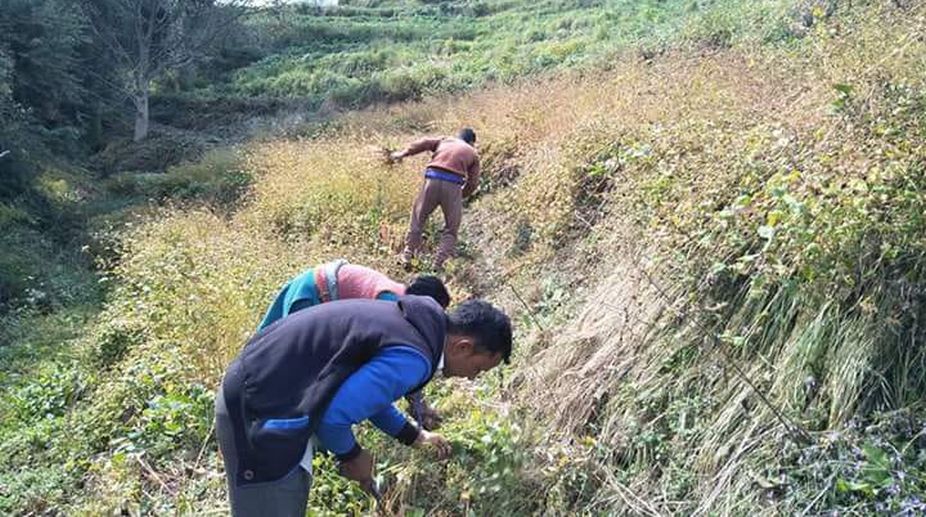127 stranded in rain airlifted from Himachal’s Sangla Valley
Chief Minister Thakur Sukhvinder Singh Sukhu brought nine stranded tourists in his chopper till Shimla, while 118 were evacuated by the Air Force.
Sangla tribals switch back to cultivation of traditional crop Buckwheat, make it a special food in home stays.

Here, the winds of change are blowing backwards!
The tribals in Sangla valley of Kinnaur district of Himachal Pradesh have switched back to cultivation and consumption of Ogla and Phaphra (Buckwheat) and have made the non-cereal a part of special breakfast platters for tourists at ‘home stays’ as well.
The two varieties of lesser known crop Buckwheat are nutritious with therapeutic value, which has re-created their demand in market.
Advertisement
Thanks to consistent efforts by Shimla based Himalayan Research Group headed by a botanist Dr Lal Singh, majority farmers in Sangla and adjoining villages, who had abandoned the crop for profit generating cash crops, have started growing Buckwheat in some part of land.
HRG is a core group of department of Science and Technology, Government of India, working for transfer of agriculture technology in HP over last two decades. It took up the task of promoting tribal tourism, linking it with home stays (government scheme) and traditional food, with the help of locals and administration through a festival a decade back. The festival offered tribal cuisine with ‘chiltey’ (bread) of ‘Ogla’ and ‘Phahpra’, apricot sweet dish and typical non-vegetarian foods.
The HRG had linked up tribals with Home Science experts from CSK HP Agriculture University, Palampur for capacity building for long term effect.
“Buckwheat was out of cultivation for long, as people had shifted to trendy cereals and cash crops like Pea, Rajmash and Apples over time. However, when we brought the traditional crop to focus and told people about its nutritional and medicinal value, they started adopting it,” said Dr Lal Singh.
He said many farmers are now growing it in Sangla valley and other parts of Kinnaur, even in apple orchards. “It does not require any manure, fertilizer or pesticide. Buckwheat crop increases the fertility of soil. It helps in ecosystem service for pollination if inter-cropped with apple trees,” he said.
The crop was traditionally grown in tribal areas of Lahaul Spiti, Kinnaur and Pangi, and Chamba Mandi and Kullu districts in Himachal. In olden times, the people living in higher hills would barter Buckwheat with Rice (which did not grow in mountains for want of irrigation).
Buckwheat crop takes 100-120 days to mature—from July to October- and is known as poor man’s food. It is magnesium rich and is sans gluten (to which many people are allergic). Once tipped as a poor man’s food, it is now selling for Rs 125-150 a kilogram due to increased demand.
“Looking into the response, we re-introduced it in Gohar block of Mandi. We are working with 100 households for its revival,”said Dr Lal Singh.
“Buckwheat comprises special food, a must in tribal marriages now. The ‘health conscious’ tribals are now liking its taste and value” said Ankush Negi, 33, an apple orchardist in Sangla.
Advertisement